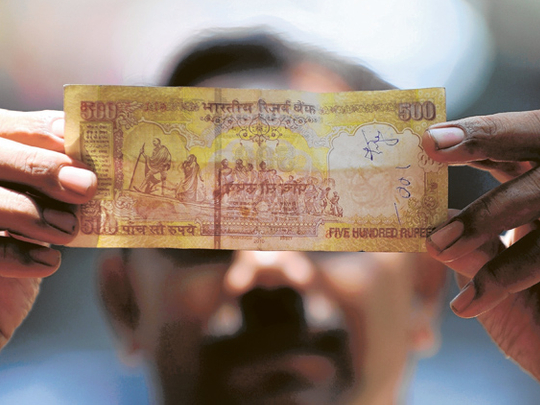
New Delhi: India’s Finance Ministry has delivered a challenge to its revenue collectors: meet tax targets despite $20 billion of corporate tax cuts.
Through a video conference on December 16, officials were exhorted to meet the direct tax mop-up target of Rs13.4 trillion ($187 billion), a government official told reporters. Collection in the eight months to November grew at 5 per cent from a year earlier, against the desired 17 per cent.
The missive shows Prime Minister Narendra Modi’s urgent need to buoy public finances in a slowing economy where April-November tax collections were half the amount budgeted. Authorities withheld some payments to states and have capped ministries’ expenditure as the fiscal deficit ballooned beyond target.
The government’s efforts to maintain its deficit goal goes against advice from some quarters, including central bank Governor Shaktikanta Das, who urged more spending to spur economic growth.
It’s uncertain though how much room Modi’s administration has to boost expenditure, given that it may already be borrowing as much as 540 billion rupees through state-run companies, a figure that isn’t reflected on the federal balance sheet. Uncertainty about public finances pushed up sovereign yields in November and December, compelling Das to announce unconventional policies to keep costs in check.
“This is not a time to conceal the fiscal deficit by off-budget borrowing or deferring payments,” said Indira Rajaraman, an economist and a former member of the Reserve Bank of India’s board. “If they were to stick to the target, that would be catastrophic because there is so much pump priming that is needed right now.”
India’s gross domestic product grew 4.5 per cent in the quarter ended September, the slowest pace in more than six years as both consumption and investments cooled in Asia’s third-largest economy. Only government spending supported the expansion, piling pressure on Modi to keep stimulating.
S&P Global Ratings warned in December it may downgrade India’s sovereign ratings if economic growth doesn’t recover.
Government support seems to be waning now, with ministries asked to cap spending in the final quarter of the financial year at 25 per cent of the amount budgeted rather than 33 per cent allowed earlier. This new rule will hamstring sectors including agriculture, aviation and coal, where not even half of annual targets have been disbursed.
As the federal government runs short of money, it’s been delaying payouts to state administrations. Private hospitals have threatened to suspend cashless services to government employees over non-payment of dues, while a builder informed the stock exchange about delayed rental payments from no less than the tax office itself.
India is considering a litigation-settlement plan that will allow companies to exit lingering tax disputes by paying a portion of the money demanded by the government, the Economic Times newspaper reported on Saturday. The move will help improve the ease of doing business besides unlocking a part of the almost Rs8 trillion ($111 billion) caught up in these disputes. The step, which is being considered as part of the annual budget, could also bridge India’s fiscal gap.
Finance Minister Nirmala Sitharaman has refused to comment on the deficit goal before the official budget presentation due February 1.
A deviation from target, if any, “will need to be balanced with a credible consolidation plan further-out,” said Radhika Rao, an economist at DBS Group Holdings Ltd. in Singapore.












